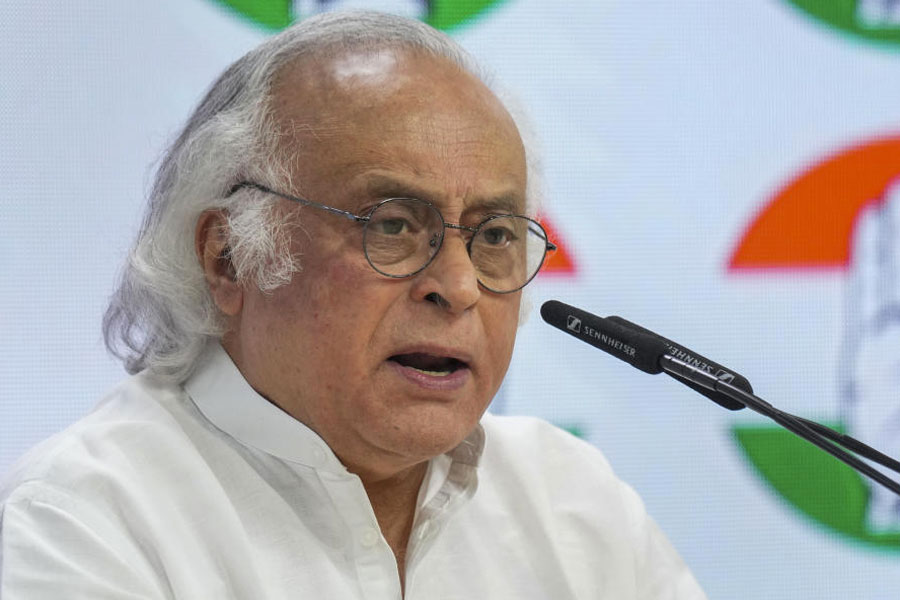Indian women with copious amounts of belly fat now have one more thing to worry about. A bulging waistline makes you three times more prone to breast cancer, shows a study.
The role of a flabby waist in triggering insulin resistance and heart attacks is well known but its link with cancer is rather less explored. A team of researchers at the Mumbai-based Tata Memorial Centre (TMC), a premier cancer research lab cum hospital, has been doing just that. According to the researchers, who published online recently in the European Journal of Cancer, the risk in Indian women is much more pronounced compared to those from other races. A study by British scientists early this year, for instance, indicated that obese Caucasian women have a 40 per cent greater risk of one of seven types of cancers, including breast tumour. Some experts even claim that 20 per cent of cancer-related death may be attributable to obesity.
The message is very clear. Indian women who are centrally obese - irrespective of their BMI (a measure that categorises a person as thin, overweight or obese) - have a three-fold risk of developing breast cancer as compared to those who are not, says Dr Rajesh Dikshit, cancer epidemiologist at the TMC. The risk remains high for all sub types of breast cancer and irrespective of their menopausal status, he says.
What is more problematic is that many such women do not even have a high body mass index (BMI) and thus do not look overtly obese. Another trend observed by the scientists was that those women who had an accelerated weight gain through the teen years were at an even higher risk.
According to the scientists, the relationship between obesity and breast cancer is complex, with different ethnic populations showing different patterns of risk. In the case of Indians, more than the BMI, waist circumference counts.
For the study, the researchers used data from around 1,600 breast cancer patients who were treated at the centre between 2009 and 2013 and an equal number of healthy people as controls. Using their waist-to-hip ratios (WHR), the scientists gauged whether they were centrally obese or not. According to the study, a WHR of 0.95 was strongly associated with breast cancer risk compared to a WHR which is less than or equal to 0.84, which is more close to an ideal WHR for women.
Indian women can have central obesity even when their BMI is normal, says Dr Dikshit. As a result, BMI is not a reliable marker to study risk associated with obesity in Indians unlike in the Caucasian population, he says.
.jpg)
But not everybody is convinced about this heightened risk. "I do not see any direct link between central obesity and breast cancer. A case-control study using tertiary hospital data is not something that can establish this. It should be investigated through epidemiological studies carried out in general population," says Dr Vijay Arora, a consultant surgeon at the Sir Ganga Ram Hospital in New Delhi. "Hundreds of obese women come to our hospital for weight loss surgeries every year. We screen them for breast cancer too before the procedure is undertaken. We have not seen any unusually high percentage of people having breast cancer," says Dr Arora.
While this case-control study merely points out the increased risk posed by obesity, yet another study that appeared in Cancer Research in February this year points to a possible molecular mechanism at work. The study, conducted by researchers from the US and Spain in an animal model, argues that fat facilitates cancer stem cell expansion and also aids increased production of inflammation-promoting proteins called cytokines. Obesity-related fat triggers local inflammation and prevents fat-forming cells called adipocytes from maturing. The presence of immature adipocytes around tumour cells during the first stages of breast cancer can increase the production of cytokines, according to the study carried out by an international team of researchers led by Joyce Slingerland of the University of Miami Miller School of Medicine.
"The prolonged coculture of tumour cells with immature adipocytes or cytokines increase the proportion of cancer stem cells, the presence of tumour cells in blood and the metastic potential after its implementation in mice," says Juan Antonio Marchal Corrales, a researcher with the University of Granada in Spain, who is a co-author of the Cancer Research paper, in a statement.
"It is known that obesity set up the inflammatory responses and is related with insulin resistance and cytokine production. I agree with the possible mechanism described by the researchers," says Dr Dikshit.
Experts say central obesity may be one of the major reasons for increasing breast cancer rates in the country. While breast cancer has already emerged as the number 1 cancer among urban Indian females, the breast cancer incidence among rural Indian females too is rising steadily.
A study recently carried out by TMC scientists, including Dr Dikshit, together with their counterparts from the Chandigarh-based Post Graduate Institute of Medical Education and Research (PGIMER) found that in Chandigarh and its satellite city SAS Nagar, breast cancer accounted for 36 and 32 per cent of all female cancers in 2013. Its prevalence is prominent in rural Punjab too. In the predominantly rural Sangrur and Mansa districts of Punjab, also covered in the TMC-PGIMER study, breast cancer rates are catching up with that of cervical cancer, which was more prevalent in earlier years.
According to official data, apart from the rise in breast cancer cases, there is a trend of more and more younger women developing the disease. While 25 years ago, out of every 100 patients, only two were from an age band of 20 to 30 and seven were from the 30-40 age band, today out of every 100, four are aged less than 30 and another 16 is aged between 30 and 40.
People, particularly women, have yet another reason for keeping their weight under check.

.jpg)









